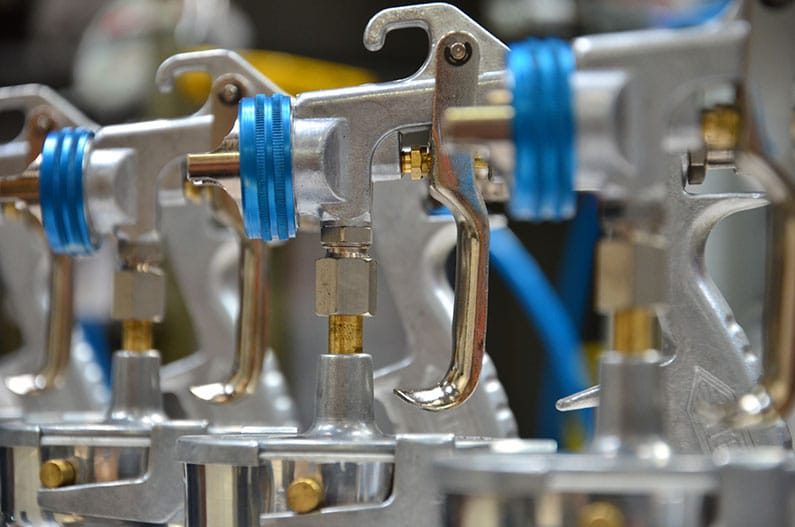
What Does a Paint Sprayer Fluid Nozzle Do?
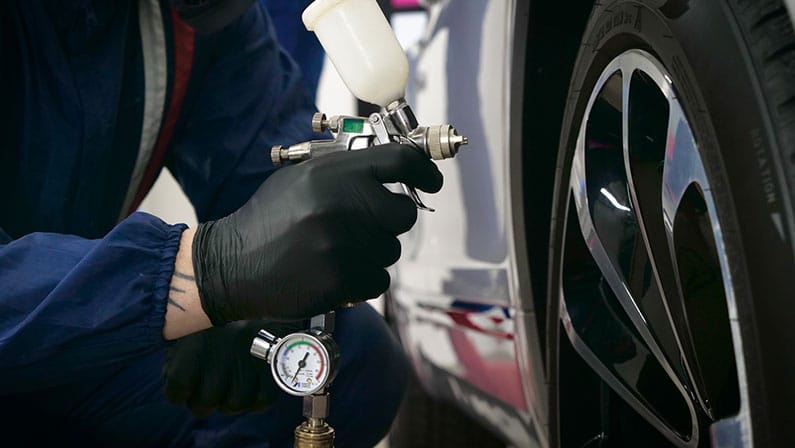
Why Does Size Matter?
Although the wife may tell you otherwise, size does matter, and this also applies to spray nozzle orifice size.
For instance, if you were to select a wide spray paint nozzle for a small detailed project involving stain, you would end up with a lot of paint wastage. This would cost you more both financially and time-wise due to a bigger clean-up.
Fan pattern size is determined by a combination of nozzle size and the pressure output of your paint sprayer. Additionally, since pneumatic (compressor-powered), turbine and airless sprayers operate via slightly different principles, you won’t find a universal spray gun tips sizes chart.
A prime example of this is an HVLP nozzle size for latex paint. In the case of a pneumatic paint sprayer, it would be expressed as 1.8 mm. Yet, an HVLP unit from Wagner would suggest using its bespoke iSpray nozzle.
However, if you were to employ an airless sprayer from Graco, the recommendation would be shown as three numbers (519) with an orifice size of between 0.015 and 0.019 inches.
But what do all these numbers mean, and how do you know what is best for you? In the next two sections, all will become clear.
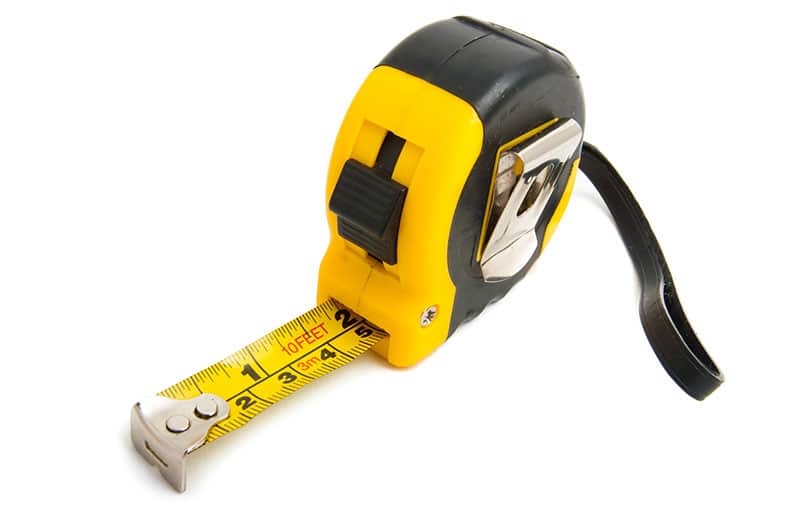
HVLP Fluid Nozzles
As HVLP (high-volume, low-pressure) paint guns fall into two categories, there is a slight variation to the HVLP spray gun tip size each requires. This means you would also need two different HVLP spray gun tip size charts.
Turbine Driven Models
A turbine-powered HVLP machine is usually driven by a fan system. This is either integrated into the body of the unit (in handheld devices) or a separate floor standing base.
While Fuji expresses its nozzle diameter in millimeters, the Wagner paint sprayer tips are given names instead (iSpray and Detail Finish). However, in essence, they will both handle the same types of coating on similar-sized tasks. So how does that work?
It comes down to what each manufacturer deems as important. For example, as the Wagner line-up is angled more toward the DIY user, the brand wants to simplify the process and remove the numbers. Hence, naming its nozzles — iSpray for large tasks and Detail for intricate work.
Another illustration of this is that, unlike its airless units, there is no Wagner spray tip chart for HVLP machines.
So, how do you know which spray gun includes a suitably sized paint sprayer nozzle appropriate for your choice of coating and job?
For a Wagner model, you would just need to determine the size of your project. However, for the brands that indicate nozzle size in millimeters, like Fuji and Earlex, check out the table below:
| Nozzle Diameter | Usage |
|---|---|
| 0.5 - 1.0 mm | Ideal for stains and other extremely low viscosity coatings. |
| 1.1 - 1.3 mm | Sealers, clearcoats, and lacquers. |
| 1.4 - 1.6 mm | Enamels, low-density primers, base coats, and urethanes. |
| 1.7 - 1.9 mm | Latex, primers, and enamels. |
| 2.0 - 2.3 mm | Higher viscosity primers. |
| 2.4 - 2.5 mm | Resins and gel coatings. |
Pneumatic Models
Pneumatic HVLP tip sizes are not quite so much of an enigma — most manufacturers like Eastwood, display its automotive spray gun tip size diameter in millimeters.
Below is an HVLP tip size chart and the recommended applications.
| Nozzle Diameter | Usage |
|---|---|
| 2.0 to 2.3 mm | Suitable for high viscosity coatings — like high-build primers. |
| 1.7 & 1.8 mm | The smallest sizes recommended for use with the majority of primers. Although these also work well with latex coatings. |
| 1.5 & 1.6 mm | A good all-around nozzle size for lacquer, single-stage coatings, and base coats. |
| 1.4 mm | Versatile size orifice for thick clear coats and nearly all base coats. (If you’re unsure which size would be best for your mid-density paint, this is a great place to start). |
| 1.2 & 1.3 mm | This narrow opening is well suited to fine finishing work using low-density waterborne paints, single stages, base coats, or clearcoats. |
| 0.5 & 1.0 mm | Ideal for detailed finishing and touch-up jobs — due to the small size of pattern delivered. They also work well with thin stains and varnishes. |
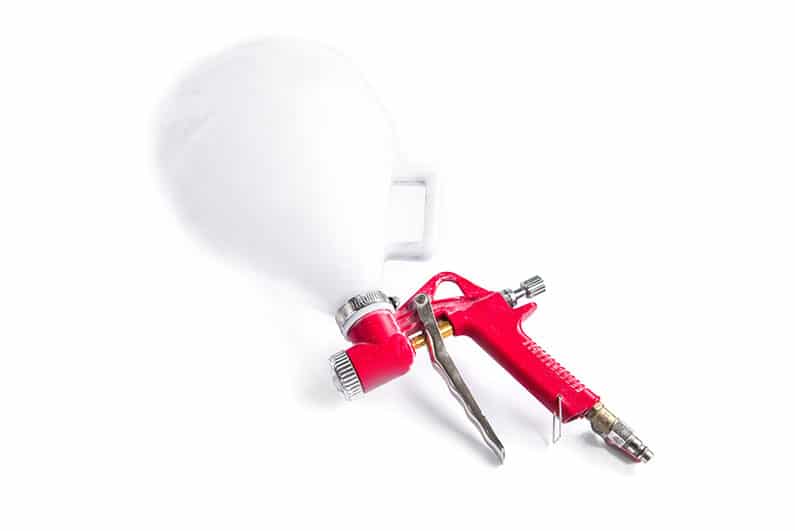
Airless Fluid Tips
| Nozzle Diameter | Usage |
|---|---|
| 0.025 to 0.035 | Block filler and elastomeric coatings. |
| 0.021 to 0.025 | Smooth elastomeric or heavy latex paints. |
| 0.015 to 0.019 | Regular latex mediums. |
| 0.013 to 0.015 | All-around universal nozzle for many oil-based coatings. |
| 0.009 to 0.013 | Stains, varnishes, and lacquers. |
Airless Reversible Nozzles
Multi Spray Gun Use
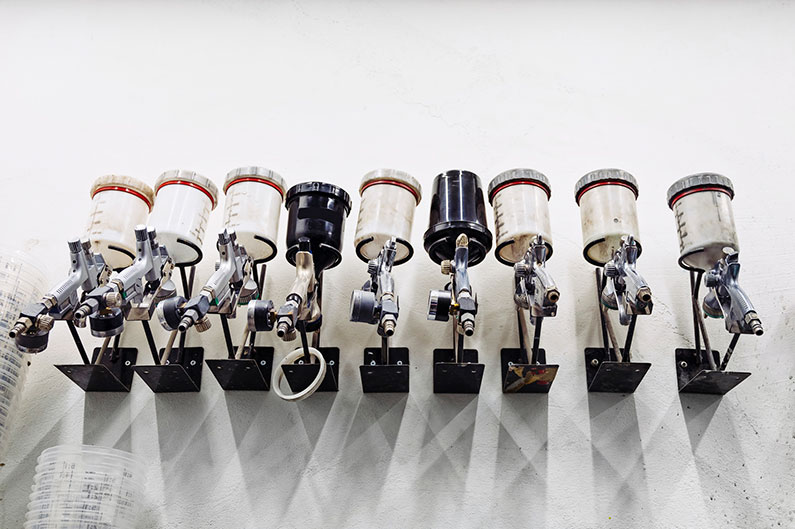
How To Find the Right Paint Sprayer Nozzle
Step 1 – Pick Your Paint Sprayer
Step 2 – Choose Your Coating and Decide Nozzle Diameter
Step 3 – Select Fan Width — According to the Size of Your Project
-
- Detailed or small projects — opt for a narrow fan width (between 4 to 8 inches).
- Expansive tasks — choose a wide fan width (ranging from 8 to 12 inches).
Step 4 – Check Your Sprayer Is Compatible With Your Tip Selection
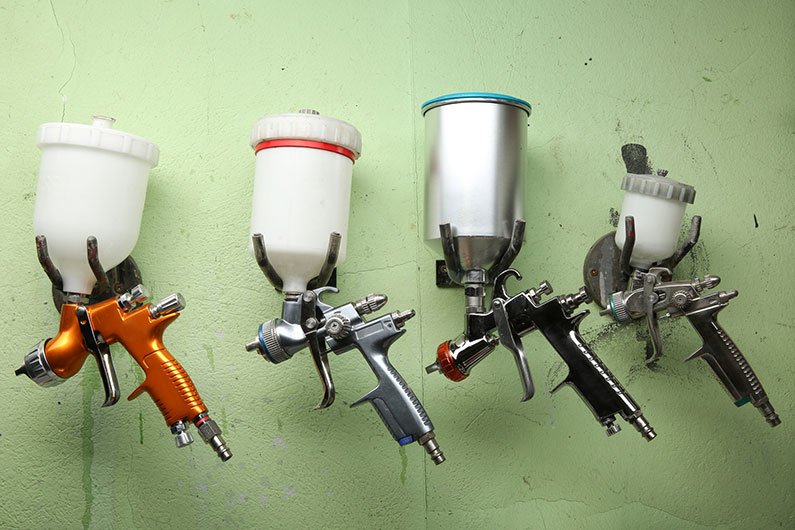
Fluid Nozzle Wear and Tear
How To Notice Wear
There are a few tell-tale signs to suggest your spray tip has seen better days.
-
- Decrease in fan size — without adjusting any settings or altering the distance at which you spray.
- Higher coating consumption — a worn tip will be less efficient, using more paint.
- Uneven pattern/coverage — you’ll notice pooling or patchy areas.
- Project pace will slow down — as the orifice diameter is becoming smaller, it will take you longer to complete your job.
Tip Guards
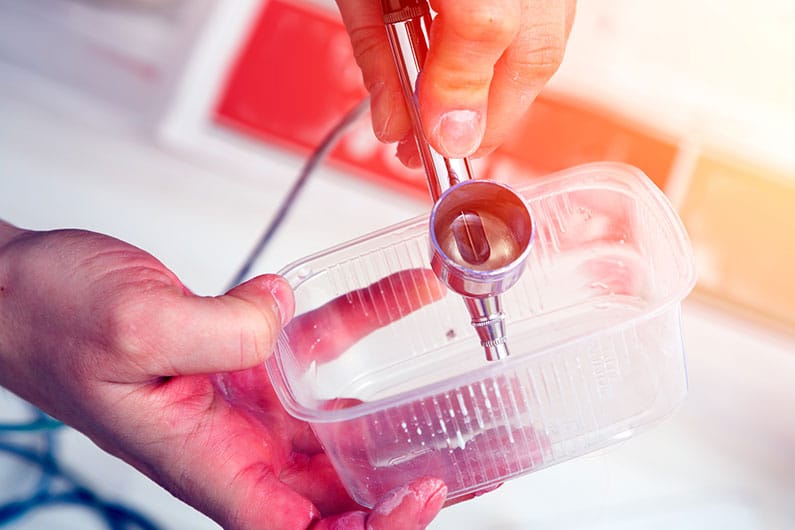
How To Make Your Nozzle Last Longer
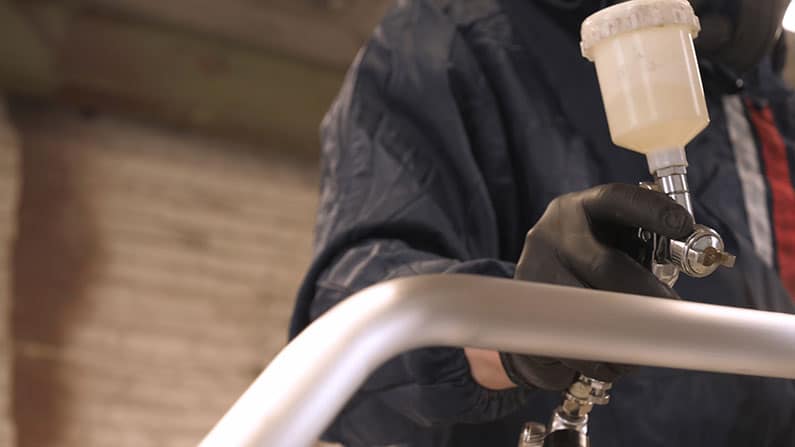
Conclusion
Paint Sprayer Nozzles FAQs
Q: Are Paint Sprayer Tips Universal?
Some fluid nozzles are interchangeable between brands. However, I would suggest checking before you do so — as it may invalidate any warranty.Q: What Is a 515 Spray Tip Used For?
A 515 nozzle is an ideal primer spray gun tip size. It will deliver a 10-inch spraying pattern which will assist you in covering mid to large-size projects rapidly.Q: Do I Need To Thin My Paint For An Airless Sprayer?
One of the great things about airless sprayers is that they can handle viscous coatings without pre-dilution. That said, check your owner’s manual for information on your particular sprayer to see if your choice of coating requires thinning.Q: How Long Do Spray Tips Last?
The majority of airless spray nozzles will last for at least between 80 and 155 gallons. However, when it comes to replacing them, you’ll find plenty of Titan, Wagner, or Graco spray tips for sale online or at your local hardware shop.










